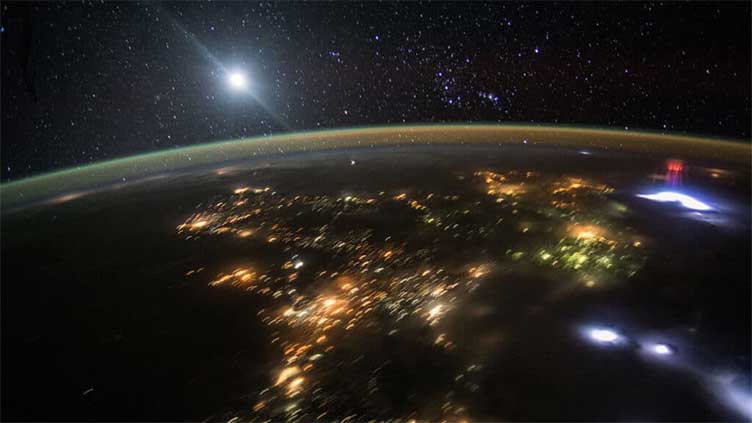Look Up! The stunning visual phenomena that Aren't auroras

Technology
Night sky can be host to ghosts, elves, red sprites and Steve
(Web Desk) - The Sun is on a roll. Our star has been releasing some of its strongest solar flares in years, which can shoot charged particles into space and toward Earth.
If this solar wind hits, it triggers geomagnetic storms that result in a beautiful light show at the poles, known as the aurora.
But as incredible as auroras are, they are not the only luminous phenomenon you can see in the sky — and some of these are far less easily explained. The night sky can be host to ghosts, elves, red sprites and, last but never least, Steve.
Here are a handful of atmospheric phenomena that you can spot in the dark winter sky:
Elves, or Emission of Light and Very low frequency perturbations due to Electromagnetic pulse Sources, appear as a halo of red light that can stretch hundreds of miles across the night sky like a giant Eye of Sauron.
Elves occur in the ionosphere — a part of the atmosphere more than 60 miles above the Earth — and may be hard to spot: They usually occur above thunderstorm clouds and are caused by electrons exciting nitrogen molecules. They also only appear for a brief instant, just 0.001 seconds, making them visible only to cameras and not the naked eye.
True to their name, red sprites are red, appearing as large flashes above active thunderstorms. They can come in singles or in big clumps and, like Elves, last for just a fraction of a second, although on rare occasions, they can be seen with the naked eye.
Unlike Elves, red sprites tend to appear as lines or tendrils, rather than a halo. Blue jets are yet another strange phenomenon of the atmosphere.
Another form of lightning like Elves and red sprites, blue jets occur when typical white lightning discharges upward from the thundercloud and hits what is known as a “screening layer” above.
First observed in the 1980s, blue jets are typically brighter and rarer than red sprites and are given their color because of the blue and near-UV emission lines caused by both neutral and ionized nitrogen in the atmosphere.
Mesospheric ghosts almost look like an aurora — green and flickery, these phenomena have also been recorded occurring near and above thunderstorm clouds, and appear to also be a form of unusual lightning.
They appear in the mesosphere, a band of atmosphere that lies between 30 and 50 miles above Earth. They seem to get their color from leftover elements from meteors that have fallen to Earth, scientists believe.
At last, we’ve come to Steve. We all know a Steve, we all love a Steve, but did you know Steve is short for Strong Thermal Emission Velocity Enhancement?
Unlike the swirling greens of the auroras, Steve appears as a ribbon of green and purple and is caused by hot gases from solar flares and coronal mass ejections striking the atmosphere. Occasionally, Steve looks like a garden fence.


